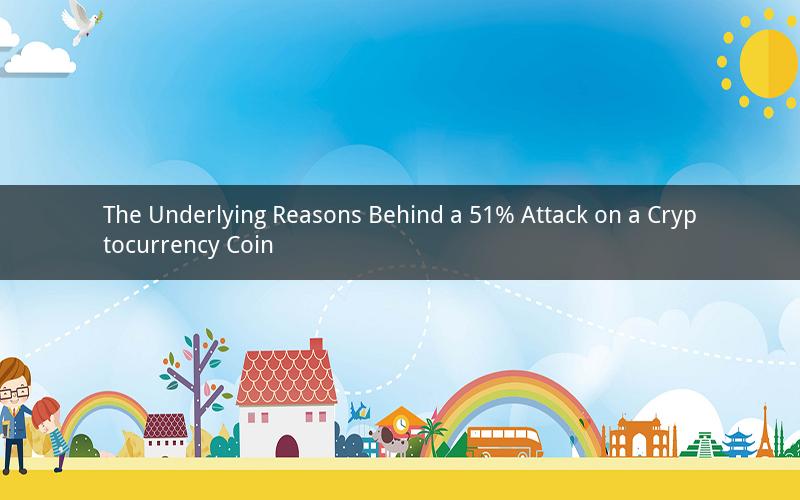
A 51% attack on a cryptocurrency coin refers to a situation where a single entity or a group of entities control more than half of the network's mining power, enabling them to manipulate the blockchain's consensus mechanism. This article delves into the reasons why such an attack might occur and the potential consequences it could have on the affected cryptocurrency.
1. Why would someone attempt a 51% attack on a cryptocurrency coin?
The primary motivation behind a 51% attack is financial gain. By controlling the majority of the mining power, an attacker can manipulate the blockchain's consensus mechanism to their advantage. Here are some reasons why someone might attempt a 51% attack:
a. Double Spending: An attacker can create two transactions for the same amount of cryptocurrency, one for themselves and another for a legitimate recipient. By controlling the majority of the network's mining power, the attacker can ensure that the fraudulent transaction is confirmed first, effectively double-spending the coins.
b. Preventing Forks: If a cryptocurrency is facing a contentious fork, an attacker can manipulate the blockchain to prevent the creation of a new chain. This would effectively give them control over the original chain and its assets.
c. Gaining Control: By controlling the majority of the mining power, an attacker can gain significant influence over the cryptocurrency's governance and decision-making processes.
2. What are the potential consequences of a 51% attack?
The consequences of a 51% attack can be severe, both for the affected cryptocurrency and its users. Here are some potential outcomes:
a. Loss of Trust: A successful 51% attack can erode the trust that users have in a cryptocurrency. This could lead to a decrease in its value and adoption rate.
b. Financial Loss: Users who hold the affected cryptocurrency could lose their investments if the attacker decides to double-spend or steal their coins.
c. Legal Repercussions: Depending on the jurisdiction, the attacker may face legal consequences for their actions.
3. How can a cryptocurrency coin be vulnerable to a 51% attack?
Several factors can make a cryptocurrency coin vulnerable to a 51% attack:
a. Small Mining Pool: If a cryptocurrency's mining pool is small, it is easier for a single entity or a group of entities to gain control over the majority of the mining power.
b. Weak Security: A cryptocurrency with weak security measures, such as outdated algorithms or inadequate network infrastructure, can be more susceptible to a 51% attack.
c. Lack of Centralization Resistance: Cryptocurrencies that lack resistance to centralization, such as those with a few dominant mining pools, are more vulnerable to a 51% attack.
4. How can a cryptocurrency coin mitigate the risk of a 51% attack?
Several measures can be implemented to mitigate the risk of a 51% attack:
a. Increase Mining Difficulty: By raising the mining difficulty, a cryptocurrency can make it more challenging for an attacker to gain control over the majority of the mining power.
b. Promote Decentralization: Encouraging the participation of more miners can help distribute the mining power and reduce the risk of a 51% attack.
c. Implement Advanced Security Measures: Cryptocurrencies should adopt robust security measures, such as improved algorithms and network infrastructure, to protect against potential attacks.
5. Can a 51% attack be prevented entirely?
While it is challenging to prevent a 51% attack entirely, there are steps that can be taken to minimize the risk:
a. Continuous Monitoring: Keeping a close eye on the network's mining power distribution can help detect any suspicious activities that may indicate an impending 51% attack.
b. Community Engagement: Engaging with the cryptocurrency community can help raise awareness about the risks associated with a 51% attack and encourage users to take preventive measures.
c. Legal Framework: Establishing a legal framework that addresses the consequences of a 51% attack can deter potential attackers and hold them accountable for their actions.
In conclusion, a 51% attack on a cryptocurrency coin can have severe consequences for its users and the coin's value. Understanding the reasons behind such attacks and implementing preventive measures can help mitigate the risk and protect the cryptocurrency ecosystem.